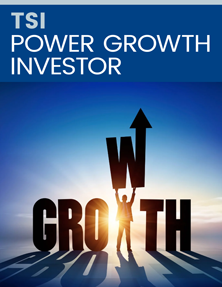Topic: Penny Stocks
What all penny stocks have in common.

All penny stocks have a number of things in common, and it’s not just their low price.
There are a number of things all penny stocks have in common besides their low price. You need to know what they are to pick winners.
Bad penny stocks require the most intensive marketing and promotion
Penny stocks do sometimes pay off, but there are many pitfalls to avoid. You should be aware that many penny stocks are little more than very well executed marketing campaigns. Penny stock promoters will do anything in their power to get their penny stock noticed. These extensive marketing campaigns include emails, TV interviews, podcasts, newsletters and other paid sponsorships.
There are also some so-called news sites that will sell sponsorships to penny stock promoters. These are great opportunities for penny stock promoters but bad for investors looking for an unbiased opinion on a stock.
|
Manage your portfolio successfully into retirement You can feel comfortable when it comes to the financial side of you retirement… if you have clear, simple guidelines on planning your portfolio design. You can benefit from our experience in the day to day work we do building wealth for our Successful Investor Wealth Management clients. We’ve packed our experience into one comprehensive guide for you—“12 Steps to the Retirement You Want.”
|
Penny stock promoters love to make deals with major, well-known firms. These deals are aimed at gaining the trust of investors—stock investors are far more likely to buy penny mining stocks that have agreements with companies like Barrick Gold, BHP Billiton or some other major mining company to finance exploration of their mining claims. This isn’t limited to just penny mining stocks. All penny stocks hope to gain the trust of investors. For example, a penny stock may issue a press release about how Sony, Apple or some other household-name multinational has agreed to sign them up as a “channel partner” to potentially co-market a computer program or electronic gadget. The penny stock hopes that the link with a major brand will give them instant credibility, even if it far from guarantees any sales or profits.
Not all penny stocks and their promoters are out to cheat investors. But it’s important to approach any penny stock with a healthy dose of skepticism.
|
What are penny stocks? A penny stock in general trades for under five dollars a share, and as the name implies, sometimes for pennies. Most of the time they’re young firms, or start-ups in speculative markets like mining or technology. Buying Canadian penny stocks can lead to a big payday when you make the right choice. But the odds against success are high. Penny stocks are almost always involved in riskier ventures, such as finding mineral deposits that can be mined at a profit, commercializing unproven technologies or launching new software. What’s more, it’s hard for any new company to grow into a profitable business, and it’s even harder in pioneering fields. But it’s relatively easy to launch a stock promotion that purports to have answers to social problems or ways to profit from emerging technologies. |
The longer you play, the likelier you are to lose
If you lose money in speculative pennies or other low-quality stocks (or ETFs that invest in low-quality stocks), you may think your main mistake was bad timing. That’s a misconception. All penny stocks rely on luck to become wildly profitable. If you play long enough, the “house odds” eventually triumph over any run of luck.
In penny stocks or games of chance, the odds are against you. So, time works against you. The longer or more often you play, the likelier you are to lose.
That’s also why we think you should apply our sell-half rule.
Selling half your holdings after you double your earnings is a good strategy for any high-risk investment, but especially so for penny stocks.
This can give you a clearer perspective on what to do with the other half of your investment. After all, if you are too slow to sell speculative stuff, your profits and even your principal can evaporate all too quickly.
The reality is it’s easier to launch a promising company than to create a successful business. That’s why only a minority of penny stocks ever go on to significant success. And while penny stocks can be a worthwhile addition to the aggressive portion of a diversified portfolio, you should in general only buy them with money you’re willing to lose.
Five ways to profit from penny stocks
In general we avoid penny stocks that promote themselves too aggressively (or do so misleadingly) here are five more things we look for when we analyze penny mining stocks for Stock Pickers Digest, our newsletter for aggressive investing.
- We want to see experienced management with a proven ability to develop and finance a mine.
- We look at environmental constraints in places where junior mines are exploring for minerals. In Europe and certain parts of the U.S. a company needs a particularly rich find to justify the costs of overcoming environmentalists’ objections.
- When we recommend junior stocks exploring for minerals, we prefer those that operate in an area whose geology is similar to that of nearby producing mines.
- We think you should avoid stocks that trade over the counter, where such things as regulatory reporting are lax.
- We also like to see a sound balance sheet in all the penny stocks we recommend. We like to see enough cash to keep operations going without the need for dilutive share issues at low prices.
- While you’re looking at the balance sheet you might also want to see if there are any hidden assets like real estate at historical prices.
Have you profited from your penny stock investments? Have you been burned by penny stock promoters? Share your experience with us in the comments.
While these factors look promising, investing in uranium stocks does entail some unique risks.
Here are some of the factors you need to assess for any uranium stock you consider buying:
Cost of exploration and mining uranium
There is a long lead time from exploration and discovery to production. When we’re researching a uranium mining stock, we look for ones that operate in an area with geology that is similar to that of nearby producing mines. This includes the Athabasca Basin in Saskatchewan where Cameco (symbol CCO on Toronto) has large, high-grade reserves, low-cost operations, significant market share and many mines. Cameco is the world’s largest uranium producer.
Location of the uranium mine
The most politically stable countries for uranium production are Canada and the United States.
Several other countries have significant uranium resources, like Niger, Namibia, Ukraine, Uzbekistan and Mongolia. However, we generally stay away from mining companies that operate in insecure and politically unstable regions like these.
When looking at uranium stocks, we also avoid those in countries with little respect for property rights and the rule of law, such as Russia or Mongolia.
Mining is particularly vulnerable to political instability. You can’t move the mine to another country, and local citizens may sometimes get the impression that a foreign mining company is robbing them of their birthright, even though the foreign company’s capital and expertise would appear to be the best way to get any value out of the ground.
Environmental constraints of mining uranium
Uranium by its very nature is radioactive. This increases the environmental constraints that will come into play when mining this metal.
Strong fundamentals overall
We like to see strong fundamentals in the uranium mining stocks we recommend. We look for low debt, because debt can be a problem for any mining company. When we recommend uranium mining stocks, we want to see a positive cash flow, preferably even when uranium prices are low.
Even better, we like to see mining companies that have cash flow from an existing mine that is sufficient for, or at least contributes to, the cost of developing a second mine.
Lastly we look for uranium stocks that have an experienced management team. We like to see teams that have a history of mine development and have financed similar projects in the past.
To lower your risk, we continue to recommend that uranium stocks make up only a limited portion of your portfolio’s resource segment. The demand for uranium will increase but it will take a keen investment eye to find the most profitable uranium stocks to invest in.
Have uranium stocks been profitable for you? How much of your resource portfolio do they make up? Share your experience with us in the comments section.


